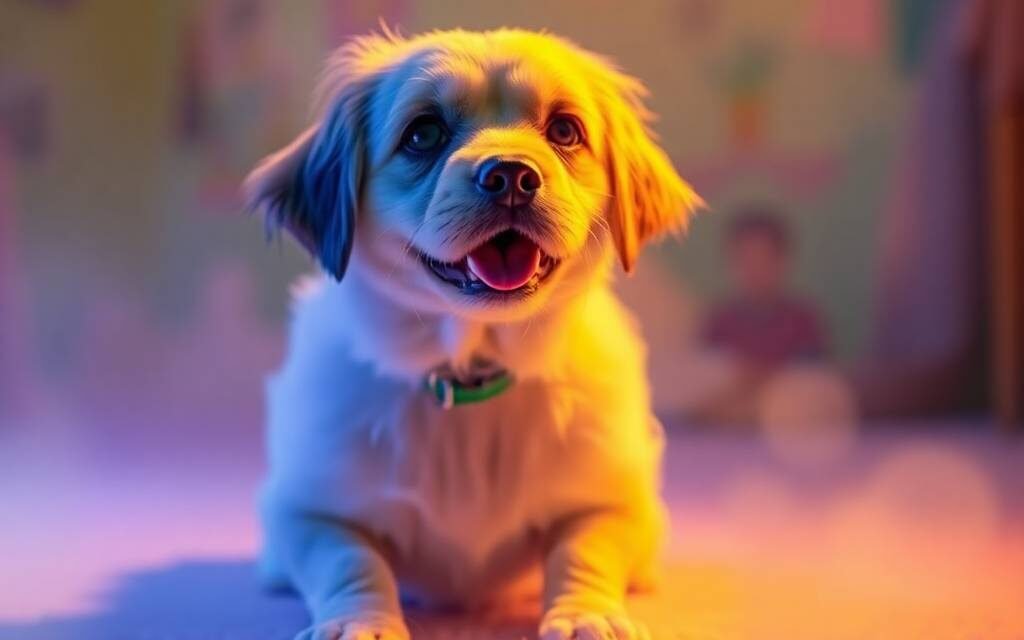Understanding the Concept of Petdes
The term ‘Petdes’ emerges from the seamless fusion of ‘pet’ and ‘des,’ representing a novel approach to the pet care industry that emphasizes both companionship and design. Pets, whether dogs, cats, or other domesticated animals, hold a significant place in the hearts and homes of individuals across the globe. They are not merely animals but rather cherished companions that nurture emotional bonds, loyalty, and joy within families and communities. This profound relationship between humans and their pets serves as the foundation for the Petdes concept, which aims to celebrate and enhance these connections through aesthetic and functional design.
The component ‘des’ reflects the principles of design and desire, illuminating how aesthetics play a pivotal role in modern pet care. The desire for stylish, innovative, and functional products is a growing trend among pet owners, as many seek items that not only serve practical purposes but also complement their personal living spaces. This shift signifies a broader cultural moment where the intersection of functionality and beauty becomes paramount, creating a lucrative niche in the pet industry.
In embracing this philosophy, Petdes positions itself as a brand that prioritizes the well-being of pets while catering to the desires of their owners for chic and sophisticated pet-related products. As the demand for quality designs expands within this market, Petdes stands at the forefront of a movement that marries the emotional importance of pet companionship with the aesthetic values that modern consumers cherish. By reimagining pet care through a lens of design, Petdes not only transforms the standard offerings but also reinforces the integral role that pets play in enhancing human lives.
The Importance of Aesthetics in Pet Ownership
In recent years, the realm of pet ownership has witnessed a notable shift towards aesthetics, marking a significant change in how pet owners perceive and select products for their furry companions. No longer are pet supplies simply functional items; they are increasingly viewed as integral components of home decor. This evolving perspective emphasizes the importance of aesthetics alongside functionality, as pet owners strive to create inviting environments that seamlessly blend personal style with their pets’ needs.
Stylish pet accessories, such as elegant food bowls, designer harnesses, and chic toys, have become popular among conscientious consumers. For instance, many owners opt for artisanal pet beds made from luxurious materials that not only provide comfort but also complement the overall design of their living spaces. Notable brands have emerged, focusing on creating products that are both visually appealing and comfortable for pets, catering to a burgeoning market of design-oriented pet parents.
This trend reveals a deeper emotional connection between owners and their pets, highlighting the desire to reflect personal taste through the choices made for their animal companions. When selecting pet products, owners are increasingly motivated by the interplay of aesthetics and personal expression, demonstrating how deeply their pets have imbued their lives with meaning. Additionally, contemporary pet furniture, such as multi-functional pieces that serve as both pet sanctuaries and stylish home accents, continues to gain traction. These offerings cater to the growing demand for products that exhibit design sensibility while ensuring the comfort and well-being of pets.
Ultimately, the interplay between pet care and design is reshaping consumer behavior in the pet industry. As pet owners become more discerning, the emphasis on aesthetics not only enriches their living environments but also reinforces the bond they share with their pets, transforming the landscape of pet ownership into a harmonious blend of functionality and style.
Innovative Pet Products and Services in the Market
The landscape of pet care is rapidly evolving, with numerous brands introducing innovative products and services that seamlessly blend aesthetics with functionality. This trend, often referred to as Petdes, exemplifies how design can enhance the pet ownership experience while also catering to the practical needs of both pets and their humans. One of the most notable areas of development is high-end pet furniture. Brands are now offering sophisticated designs that not only provide comfort for pets but also contribute to the overall decor of homes. These products include stylish dog beds, modern cat trees, and chic feeding stations, all crafted with the intention of elevating interior spaces.
In addition to furniture, designer collars and leashes have gained popularity among pet owners seeking to express their style. These accessories are made from premium materials, often featuring unique patterns and custom designs, ensuring that pets not only look good but also have durable and functional items. Eco-friendly pet toys have also emerged as an essential category within the market. These toys are produced from sustainable materials, promoting environmental responsibility while ensuring that pets have safe and engaging play options.
Moreover, grooming services are being redefined with a focus on aesthetics. Pet grooming parlors now offer specialized services that combine care, style, and a relaxing environment for pets. From spa-like experiences to stylish grooming tools, the emphasis is on catering to both pet and owner preferences.
The role of technology in this evolving Petdes space cannot be overlooked. Innovations such as smart collars, automated feeders, and pet monitoring systems are revolutionizing how pet owners interact with their pets, enhancing the overall experience through design-forward solutions that prioritize both convenience and style. Collectively, these innovative products and services not only enhance the quality of life for pets but also foster a deeper bond between pets and their owners.
Future Trends in Pet Care and Design
The future of pet care and design, often referred to as Petdes, is set to evolve significantly in response to changing consumer preferences, technological advancements, and societal shifts. One of the most prominent trends is the increasing emphasis on sustainable materials. As awareness of environmental issues grows, pet owners are increasingly seeking eco-friendly products made from biodegradable or recycled materials. This shift not only aligns with the values of environmentally conscious consumers but also reflects a broader commitment within the industry to reduce its carbon footprint.
Personalization is another key trend gaining traction in the pet care sector. Today’s consumers—particularly millennials and Gen Z—are not merely looking for functional pet products; they desire items that reflect their personal style and their pets’ unique needs. This has led to the rise of customized pet products, from bespoke pet beds to specialized dietary options. The use of digital design tools allows for greater creativity and customization, enabling consumers to engage more deeply with the products they choose for their pets.
Additionally, the shifting demographics of pet ownership are influencing the types of products that will emerge in the market. As lifestyles change, with more individuals living in urban environments and prioritizing minimalistic design, there is an increasing demand for sleek and space-saving pet products. Pet owners are seeking items that seamlessly integrate into their living spaces without compromising on style or function.
While there are numerous opportunities within the evolving landscape of pet care, challenges remain. Companies will need to navigate the complexities of supply chain sustainability and effectively communicate the benefits of eco-friendly products to consumers. As the industry continues to adapt to new trends and consumer expectations, the intersection of pet care and design holds promising potential for innovation and growth.

